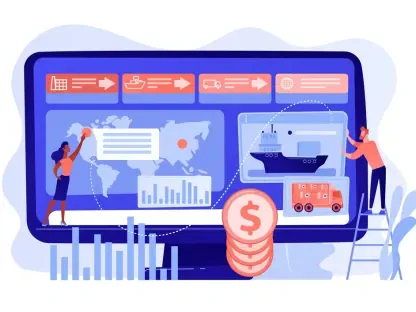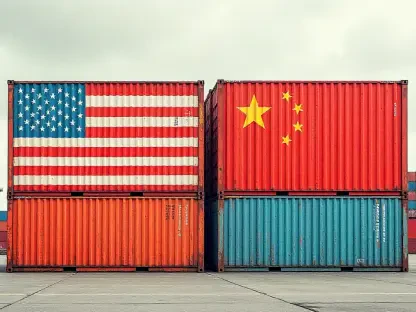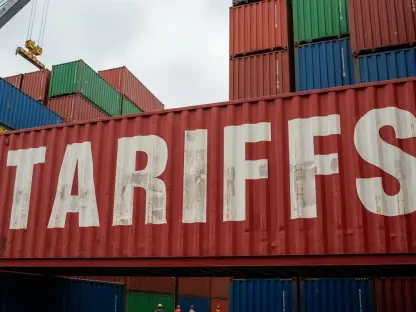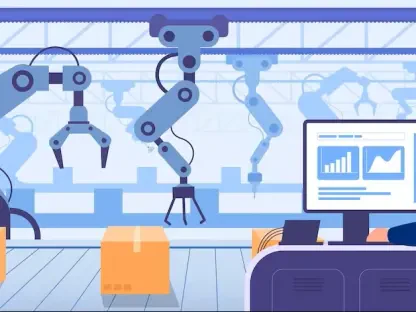Imagine a world where supply chains predict disruptions before they happen, optimize routes in real-time, and assess supplier risks with pinpoint accuracy, all while slashing costs and boosting efficiency. Artificial intelligence (AI) is already making this a reality for forward-thinking organizations, transforming complex networks into smarter, faster, and more resilient systems. From forecasting demand to streamlining logistics, AI offers unprecedented clarity and speed in decision-making. However, harnessing these benefits requires more than just adopting new technology. Supply chains must be structurally, culturally, and technologically prepared to integrate AI effectively. Failing to do so risks unreliable outputs, operational hiccups, and even reputational damage. The path forward lies in strategic preparation, focusing on key areas that ensure AI becomes a powerful ally rather than a liability in navigating the complexities of modern supply chain management.
1. Opting for Industry-Specific AI Tools
Selecting AI solutions tailored to the unique challenges of the supply chain industry is a critical first step. Generic AI tools often fall short in addressing specific issues like fluctuating regulatory requirements, seasonal demand shifts, or intricate supplier networks. In contrast, purpose-built AI systems bring deep sector knowledge to areas such as logistics, procurement, inventory control, and risk evaluation. These tools deliver insights that are not only relevant but also actionable, grounded in real-world industry expertise. By focusing on solutions designed for supply chain contexts, organizations can avoid the pitfalls of mismatched technology and ensure that AI applications directly address operational pain points, ultimately driving better decision-making and efficiency across the board.
Moreover, adopting industry-specific AI tools allows for seamless integration with existing processes and systems. Many supply chains operate within highly specialized environments where even small misalignments in technology can lead to significant disruptions. Tailored AI solutions are often built with compatibility in mind, reducing the friction of implementation. They also provide frameworks that account for the nuances of supply chain data, such as multi-tier supplier dependencies or just-in-time inventory models. This targeted approach helps organizations maximize the value of AI by aligning its capabilities with strategic goals, ensuring that technology serves as a true enabler of progress rather than an added layer of complexity in an already intricate landscape.
2. Establishing a Unified Data Framework
The effectiveness of AI hinges entirely on the quality and consistency of the data it processes. Supply chain data is often fragmented, collected from diverse partners, locations, and systems, resulting in inconsistent formats that hinder AI performance. Building a unified data foundation involves cleansing and standardizing information across the entire network to create a single, coherent structure. This ensures that disparate systems can communicate seamlessly, providing AI with a reliable base to generate accurate insights. Without this step, even the most advanced AI tools risk producing flawed outputs, undermining trust and operational reliability in critical decision-making processes.
Beyond standardization, maintaining a unified data framework requires ongoing efforts to manage data integrity. Supply chains are dynamic, with new partners, systems, and variables introduced regularly, which can reintroduce fragmentation if not addressed. Establishing protocols for real-time data updates and validation helps sustain the quality of the foundation over time. Additionally, integrating data from emerging technologies like IoT devices or blockchain can further enhance visibility and traceability. A robust data infrastructure not only supports AI deployment but also empowers organizations to uncover hidden patterns and trends, transforming raw information into a strategic asset for long-term competitiveness.
3. Training Teams for AI Integration
AI cannot deliver results in isolation; its success depends on the workforce’s ability to use it effectively. As automation takes over routine tasks like reporting, scheduling, and data entry, employees must be equipped with the skills and confidence to interact with AI systems. Investing in continuous training programs helps staff understand both the potential and limitations of AI, as well as its ethical implications. Such initiatives foster a human-in-the-loop approach, combining AI’s computational strengths with human oversight to ensure accountability and creativity remain central to operations, preventing over-reliance on technology alone.
Equally important is cultivating a culture that embraces AI as a collaborative tool rather than a replacement for human input. Training should extend beyond technical know-how to include scenario-based learning, where teams practice interpreting AI outputs and making informed decisions. Addressing concerns about job displacement through transparent communication can also build trust and encourage adoption. By prioritizing education and skill development, organizations enable their workforce to leverage AI for innovation while maintaining control over critical processes, ensuring that technology amplifies human expertise rather than diminishing it.
4. Setting Ethical and Governance Benchmarks
Given the complexity of supply chains, AI systems cannot fully grasp every operational nuance without human guidance. Establishing clear ethical and governance frameworks ensures that AI-driven decisions remain fair, transparent, and aligned with organizational goals and regulatory standards. These frameworks act as guardrails, preventing unintended consequences such as biased outputs or non-compliance with industry rules. Regular monitoring and feedback loops allow for validation of AI results, incorporating contextual insights to refine performance and maintain trust in automated processes across the network.
Furthermore, governance must evolve alongside AI capabilities to address emerging challenges. This includes setting policies for data usage, decision accountability, and stakeholder impact. Engaging cross-functional teams in the development of these standards ensures diverse perspectives are considered, reducing blind spots. Ethical oversight also builds credibility with partners and customers, demonstrating a commitment to responsible innovation. By embedding governance into AI adoption, supply chains can balance efficiency gains with integrity, turning ethical practices into a cornerstone of operational excellence.
5. Bolstering Cybersecurity Measures
As supply chains become increasingly connected through cloud infrastructure and modular systems, they face heightened cyber risks. AI systems, with access to sensitive data and external interactions, can amplify vulnerabilities if not properly secured. High-profile breaches in recent years have shown how cyberattacks can ripple through operations, causing widespread disruption. Protecting both legacy systems and AI models is paramount to maintaining reliability. Robust cybersecurity measures, including encryption and threat detection, are essential to safeguard data integrity and prevent operational chaos in a hyper-connected environment.
In addition to technical defenses, organizations must prioritize proactive risk management to stay ahead of evolving threats. Regular audits of AI systems can identify potential weaknesses, while training employees on cybersecurity best practices minimizes human error as an entry point for attacks. Collaboration with industry partners to share threat intelligence can also enhance collective resilience. Strengthening cybersecurity not only protects against immediate disruptions but also preserves trust with stakeholders, ensuring that AI-driven supply chains remain a source of competitive advantage rather than a liability.
Final Reflections: Building Resilient Foundations
Looking back, the journey to integrate AI into supply chains demanded a multifaceted approach that went beyond mere technology adoption. Organizations tackled data standardization, workforce training, ethical governance, and cybersecurity with diligence, recognizing that each element played a vital role in success. Tailored AI solutions proved instrumental in addressing industry-specific challenges, while unified data frameworks ensured accuracy in insights. As these efforts unfolded, the emphasis on human oversight and robust security measures safeguarded operations from risks. Moving forward, supply chains should continue to refine these foundations, exploring advanced analytics and emerging technologies to stay agile. Partnering with experts and investing in scalable solutions will be key to sustaining momentum, ensuring that AI evolves from a tool of efficiency into a driver of transformative innovation.









